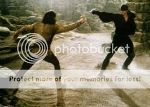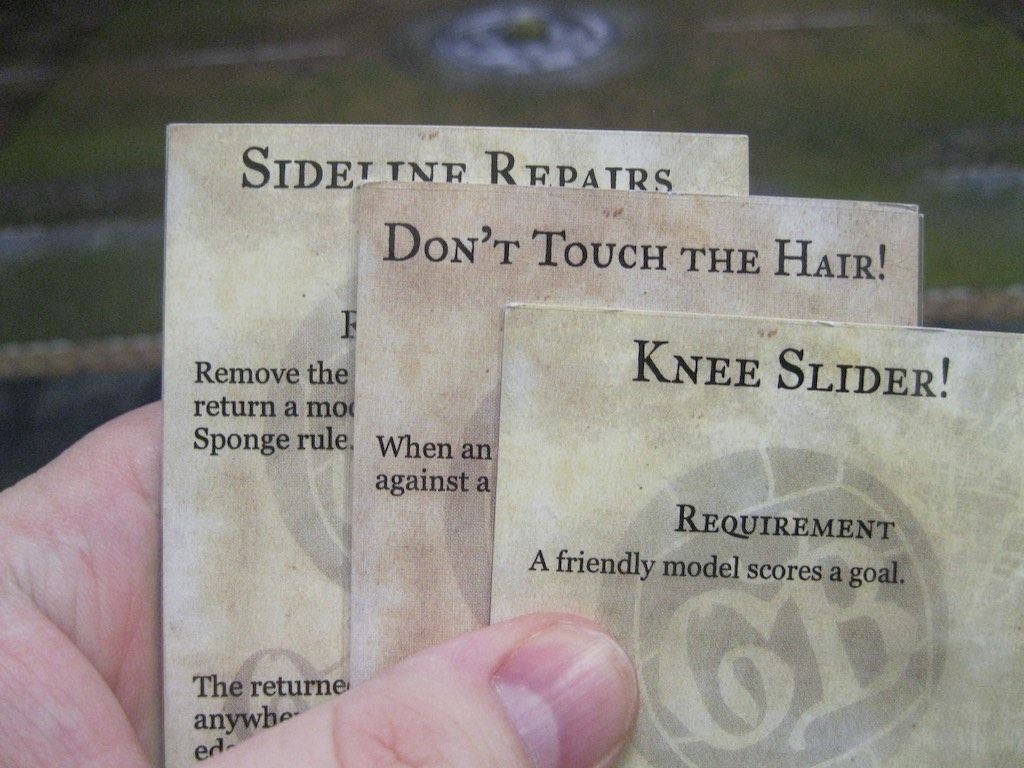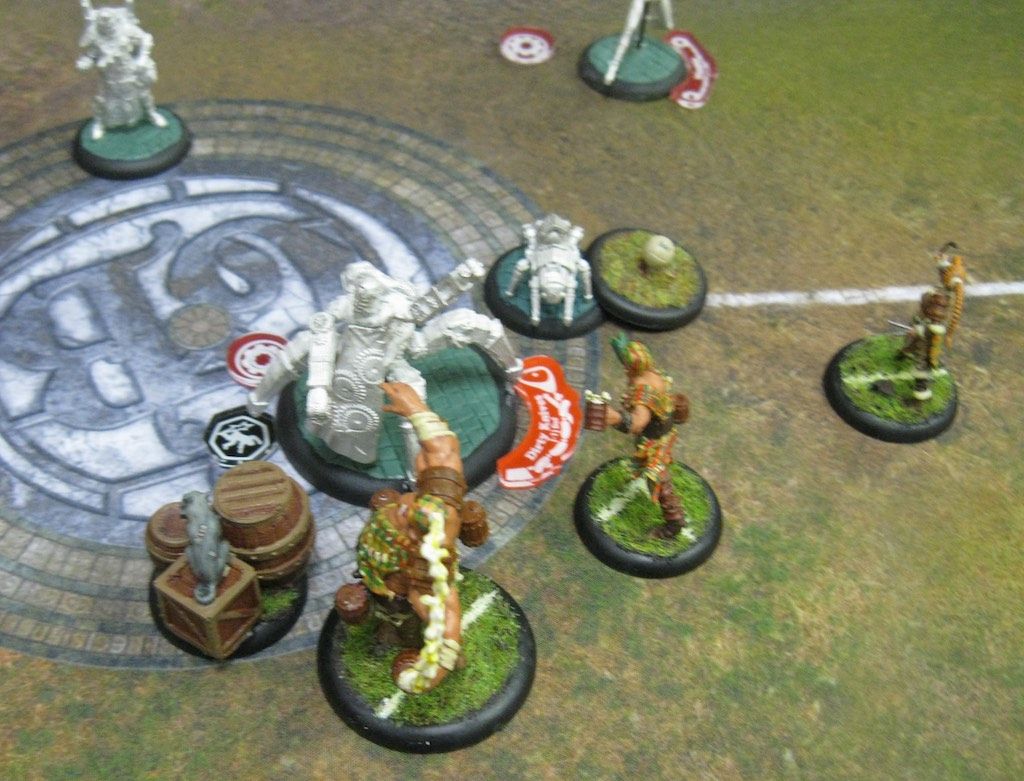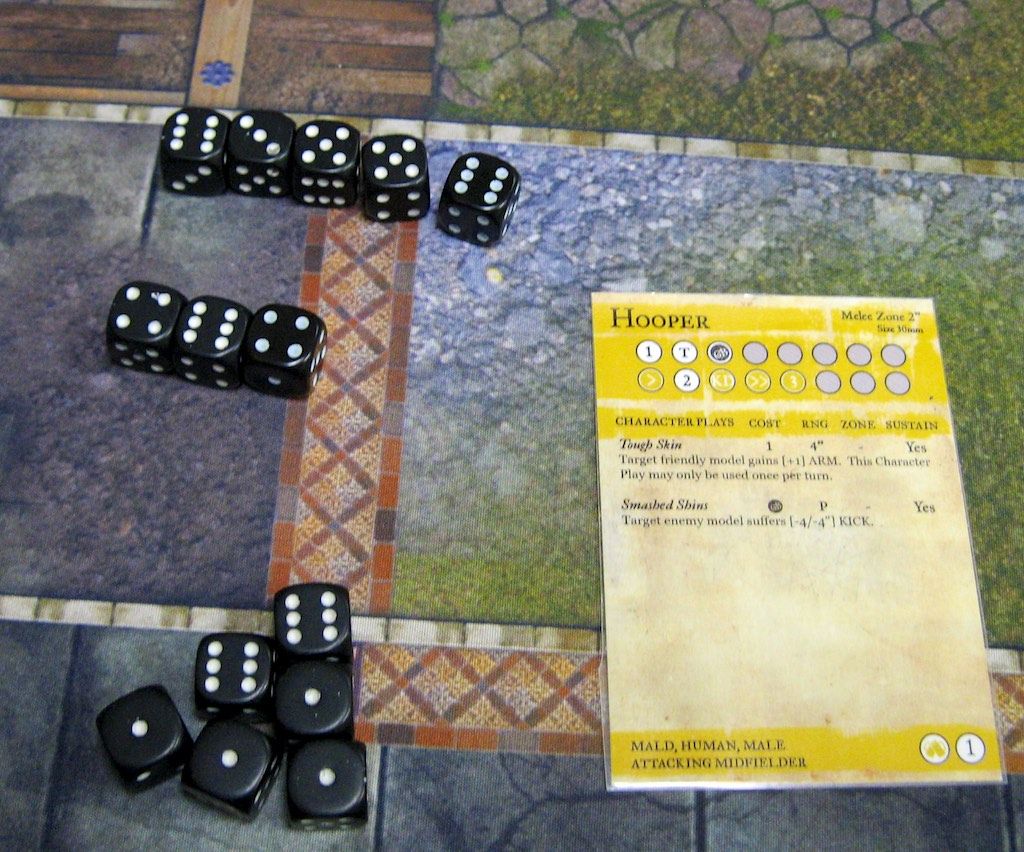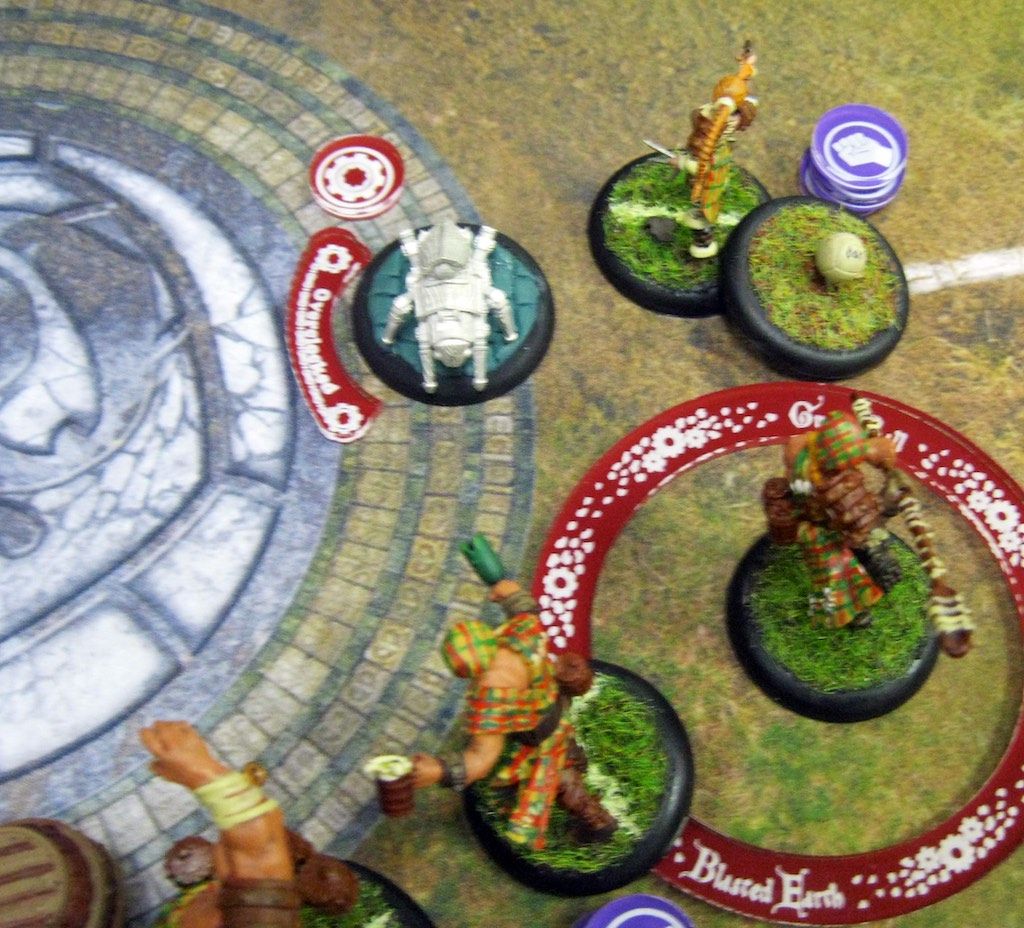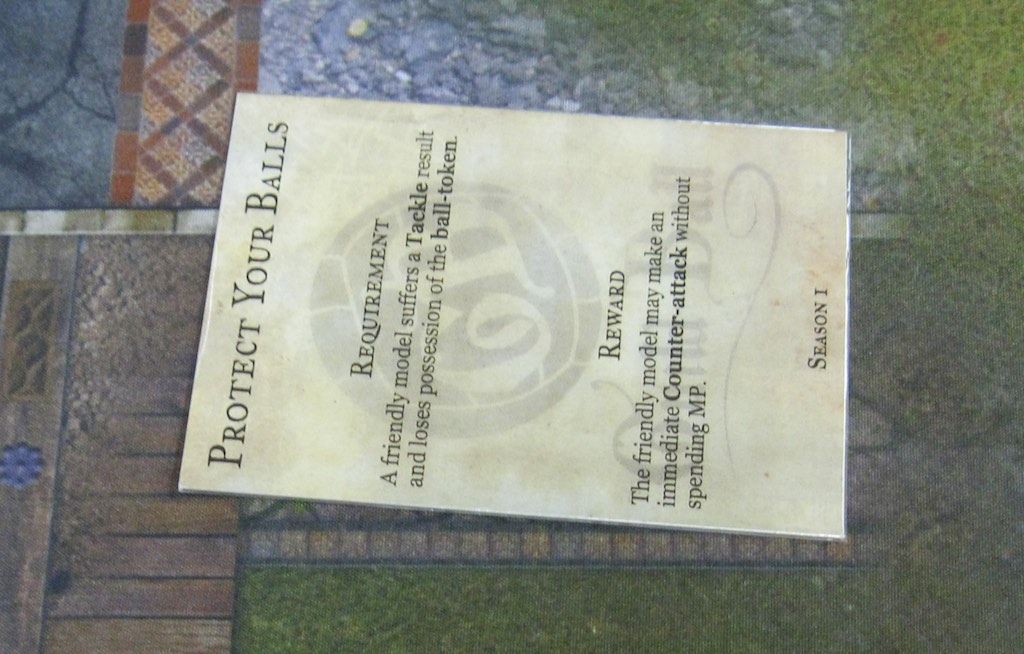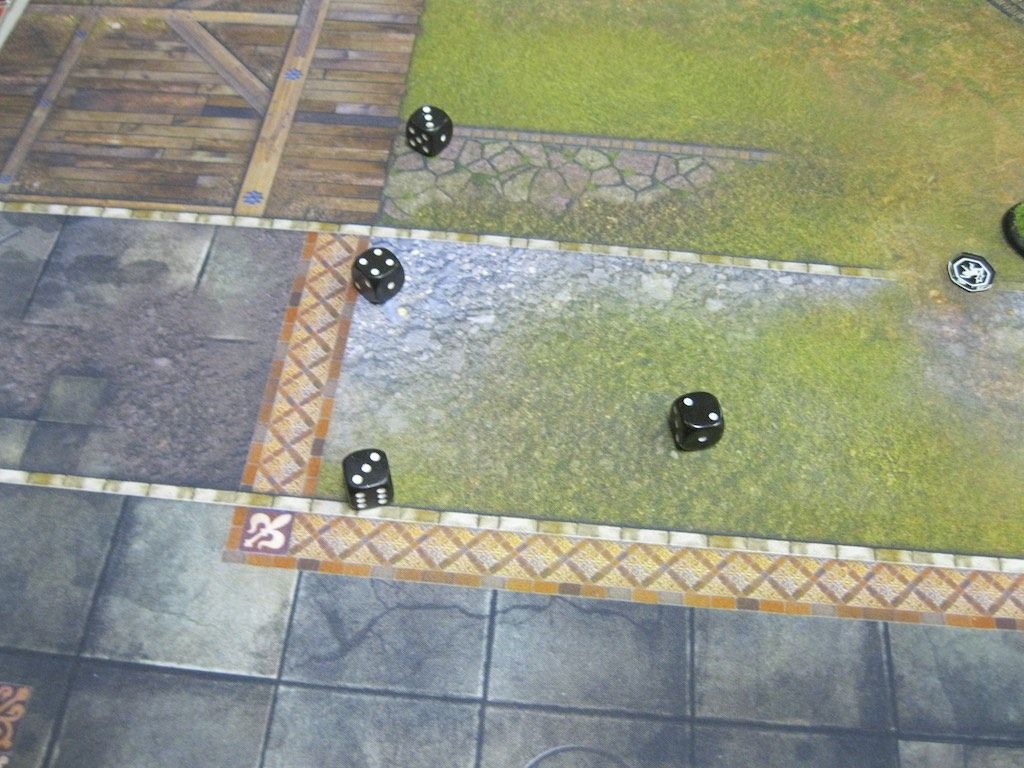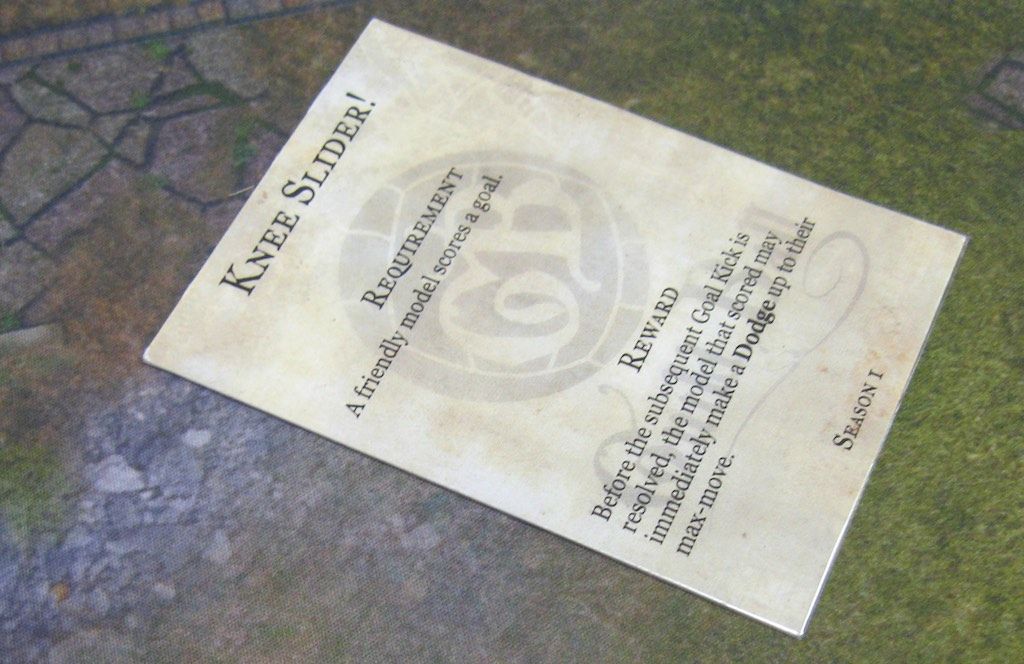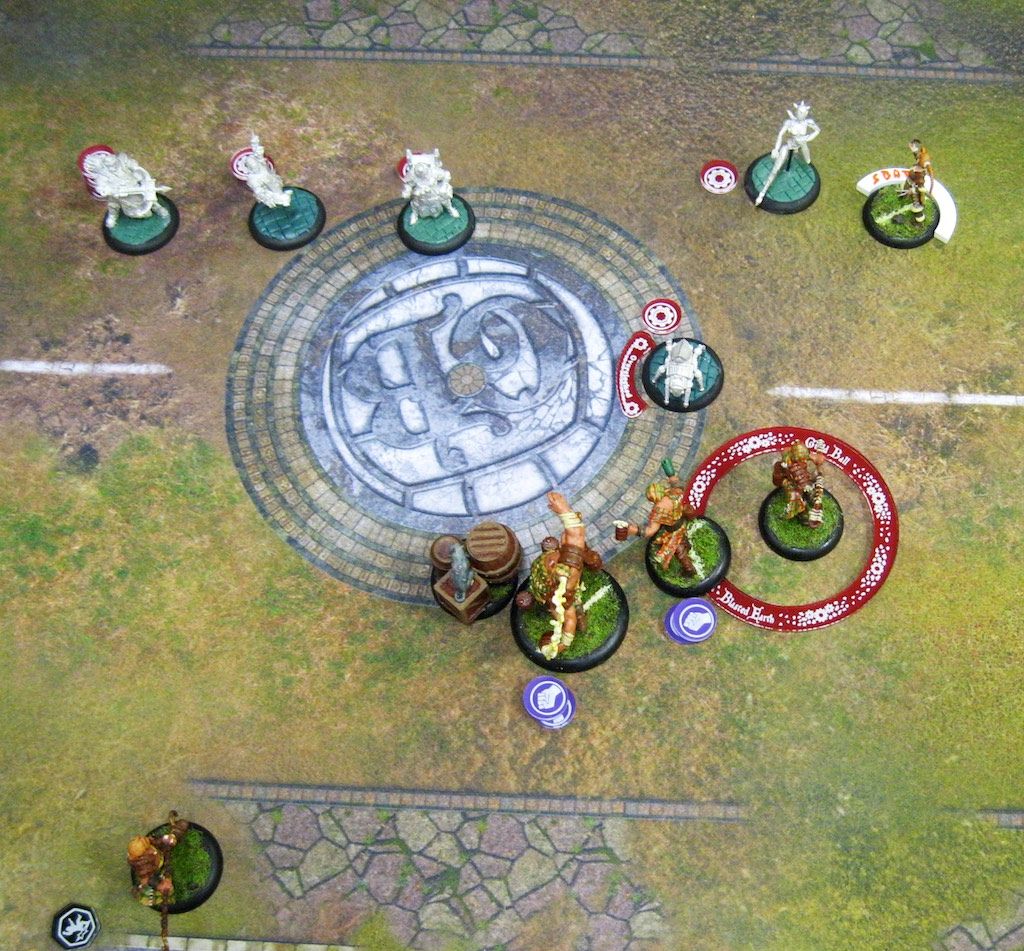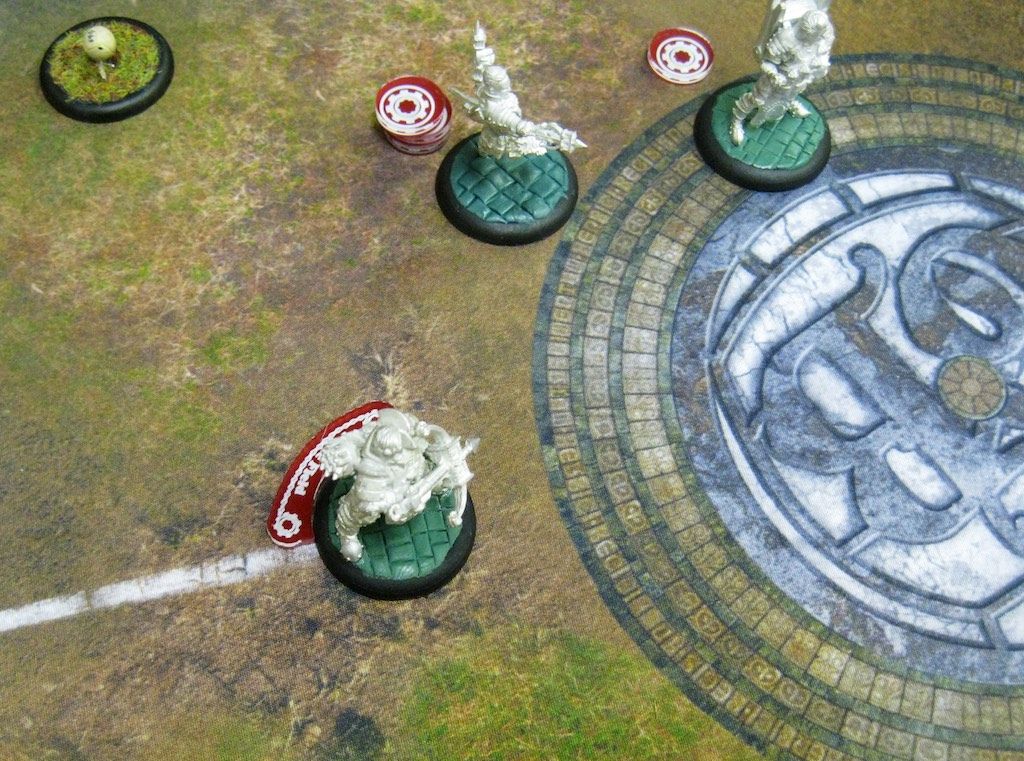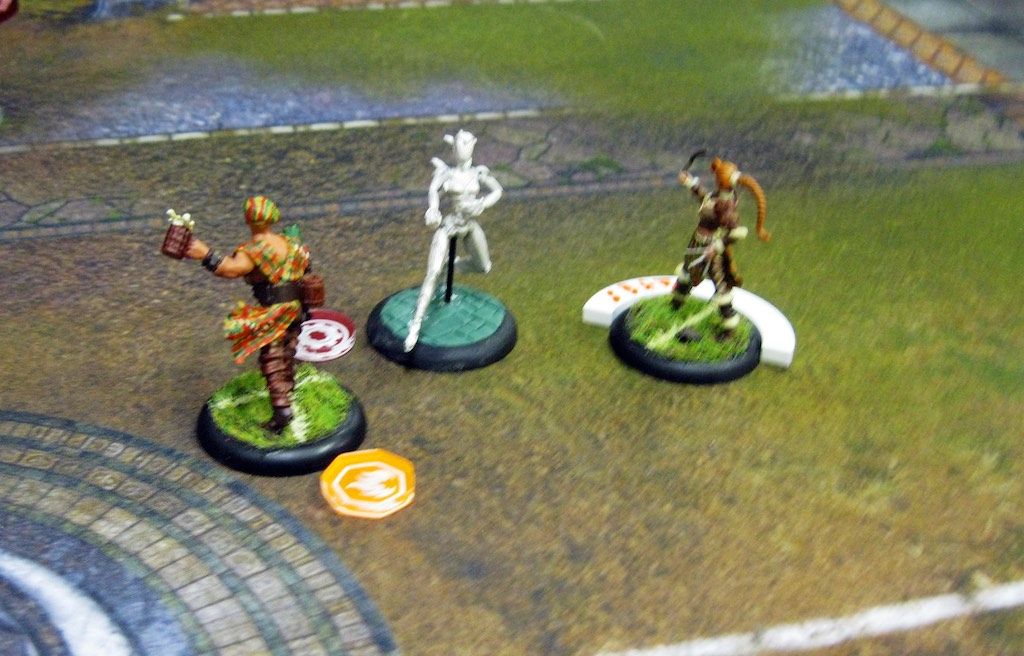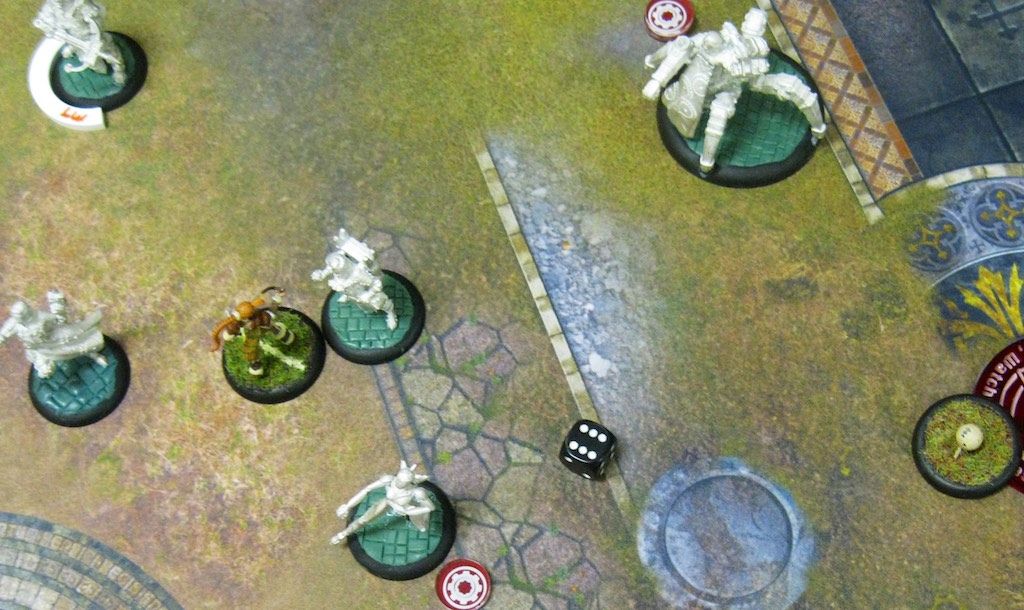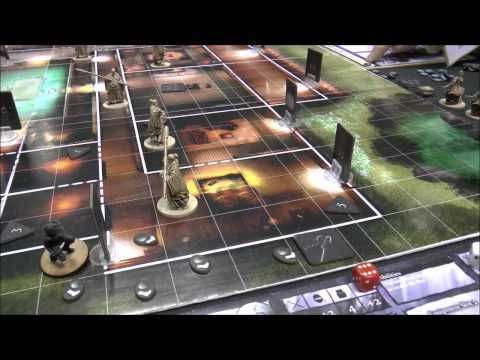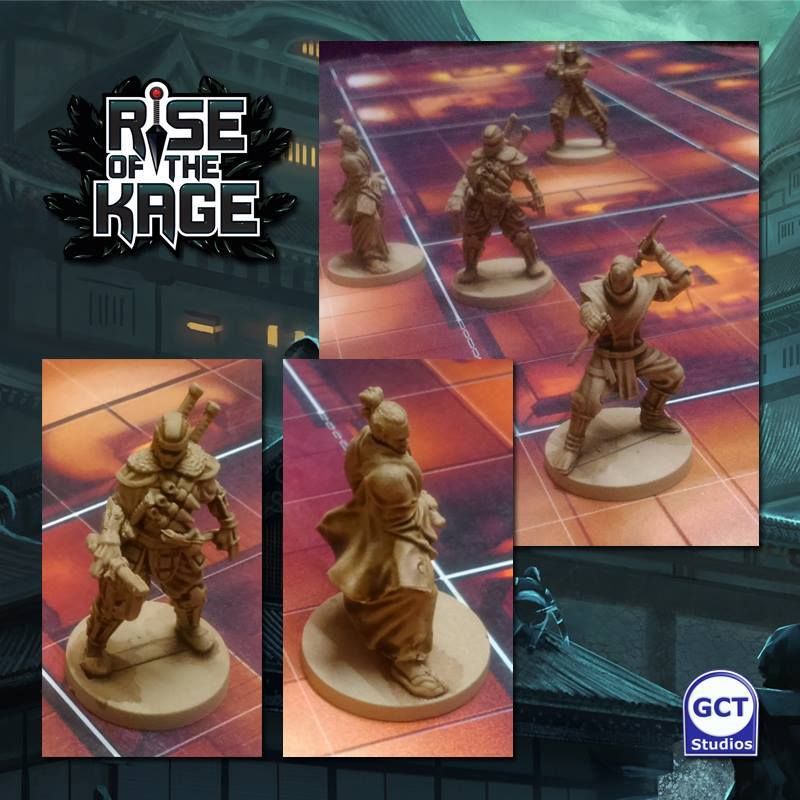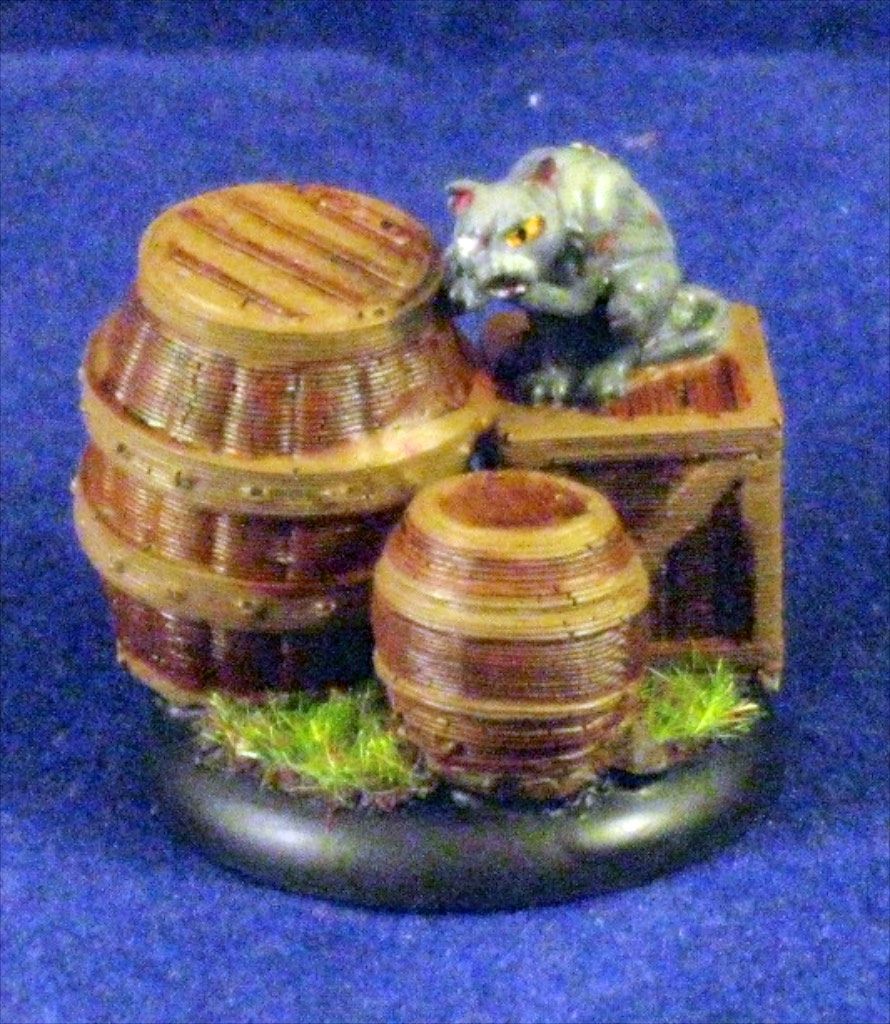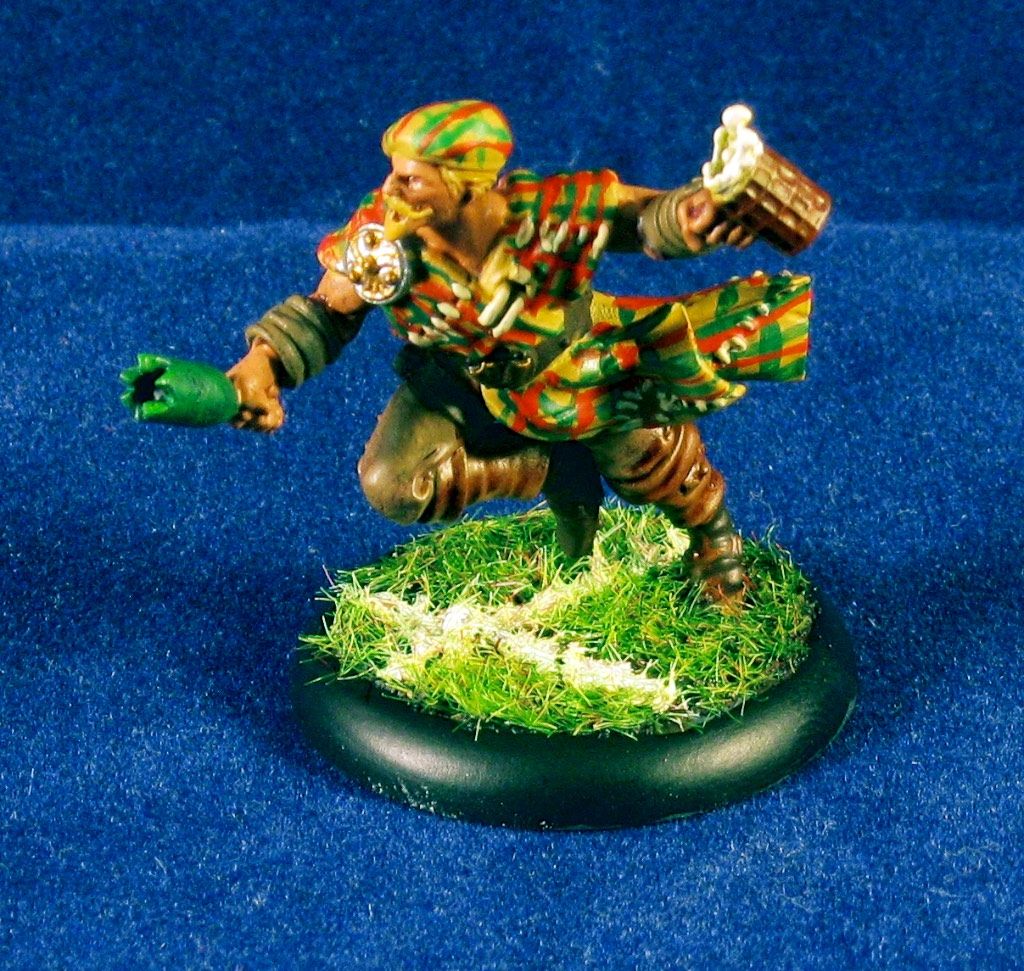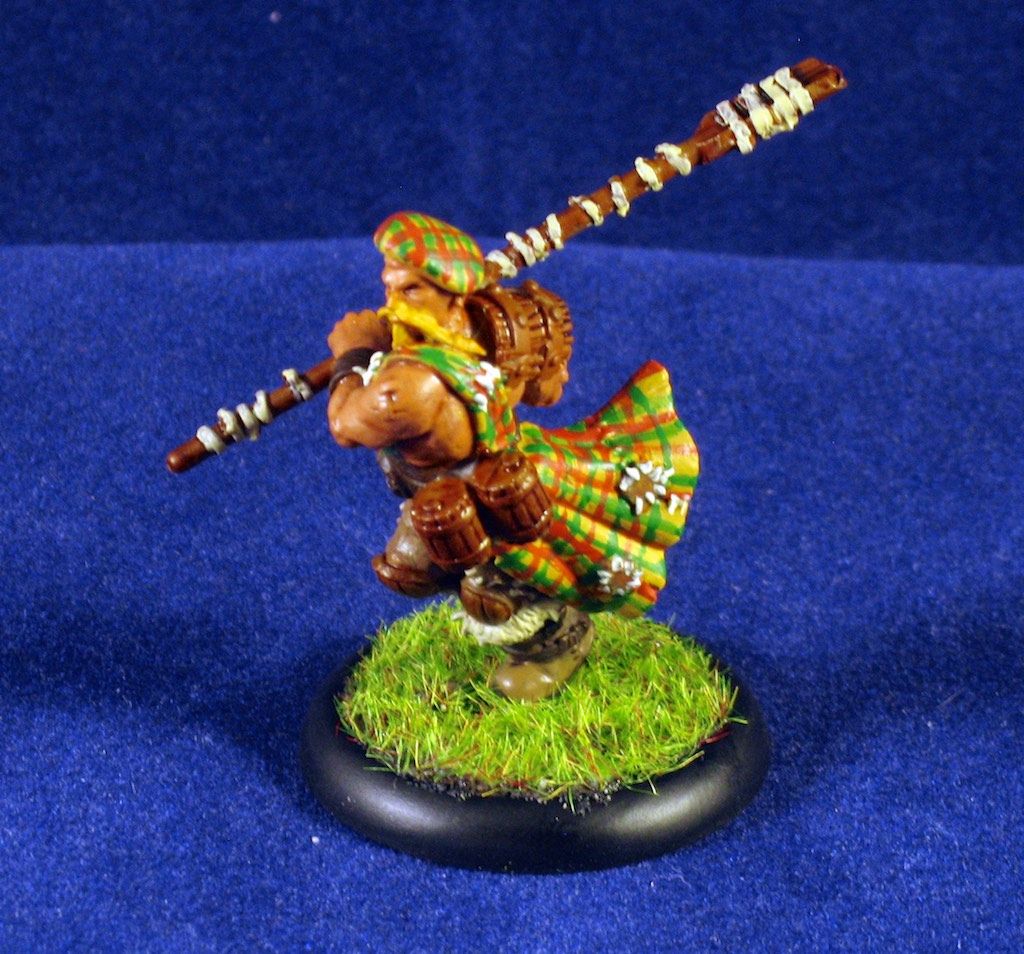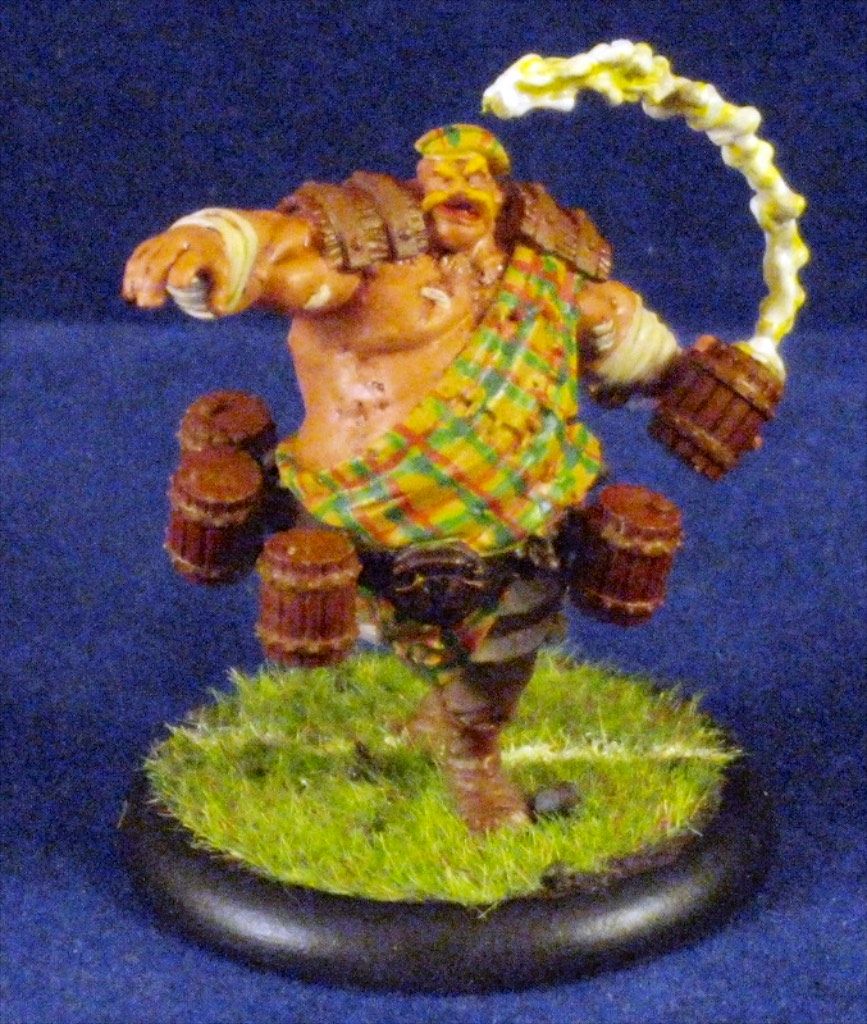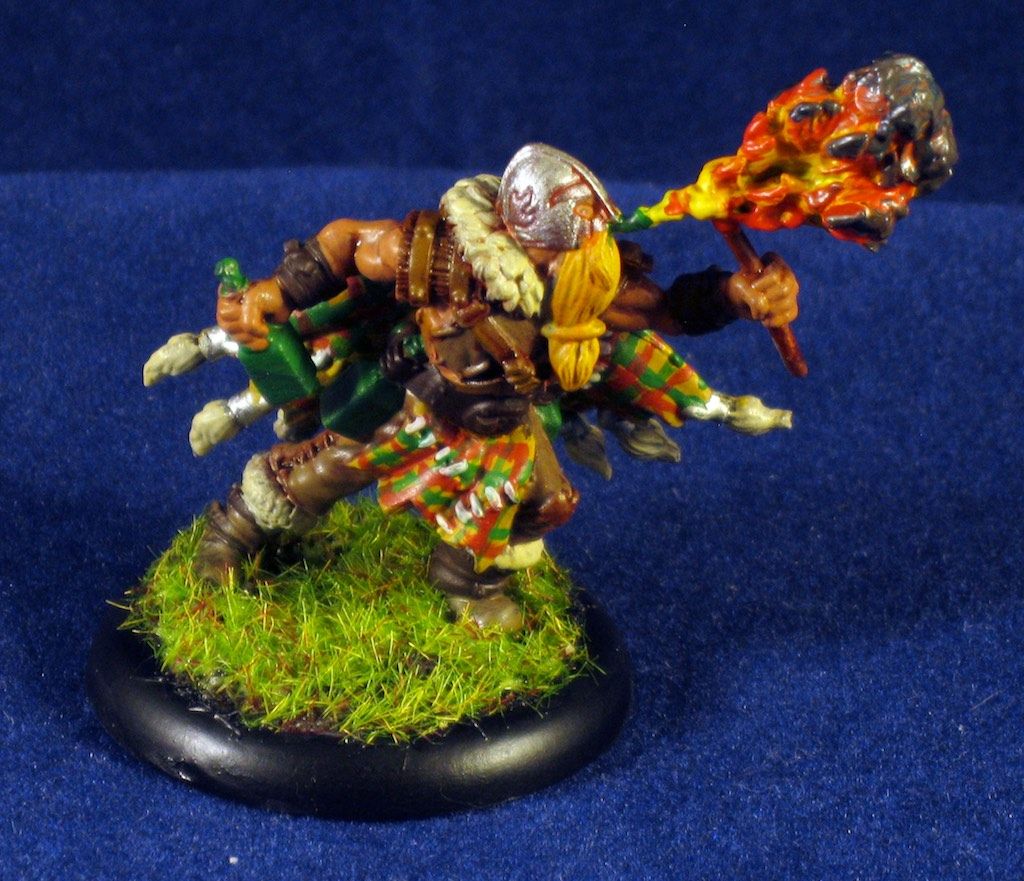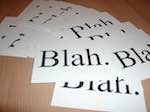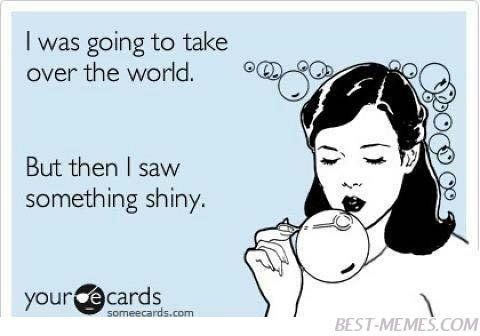Since returning to blogging I have not written up too many game reports. I've gotten out of the practice bringing my camera with me on game night. Additionally I've been focused on playing and improving my games of Guild Ball, so have not done a lot of analysis and thinking during or after the game. All that said, I made a point of packing up my camera a couple weeks ago and bringing it out to a game with Ben. Ben had just picked up and assembled his second Guild Ball team, Engineers, and was looking forward to learning how the team worked. I've been working to figure out how to play my Brewers better and specifically how to get some solid use out of Spigot.
A bit of time has passed since this game and I've already run an entire tournament plus played a couple other games in the interim. I'll be trying to remember as much as possible from my game, along with some of the drivers behind my decisions.
Setup
Ben used a very basic Engineers team with Ballista, Mainspring, Ratchet, Salvo, Velocity, and Collosus. I think this is a great way to start out with a new team, getting the feel for the basic team players before expanding your selection with Union players. You should be able to get a solid feel for the role each player on a team fulfills and then be able to make smart choices on where to substitute and swap out. Ben Deployed in a fairly standard line across the board, keeping Collosus in the center of his line. I had the kick-off so this made sense to me.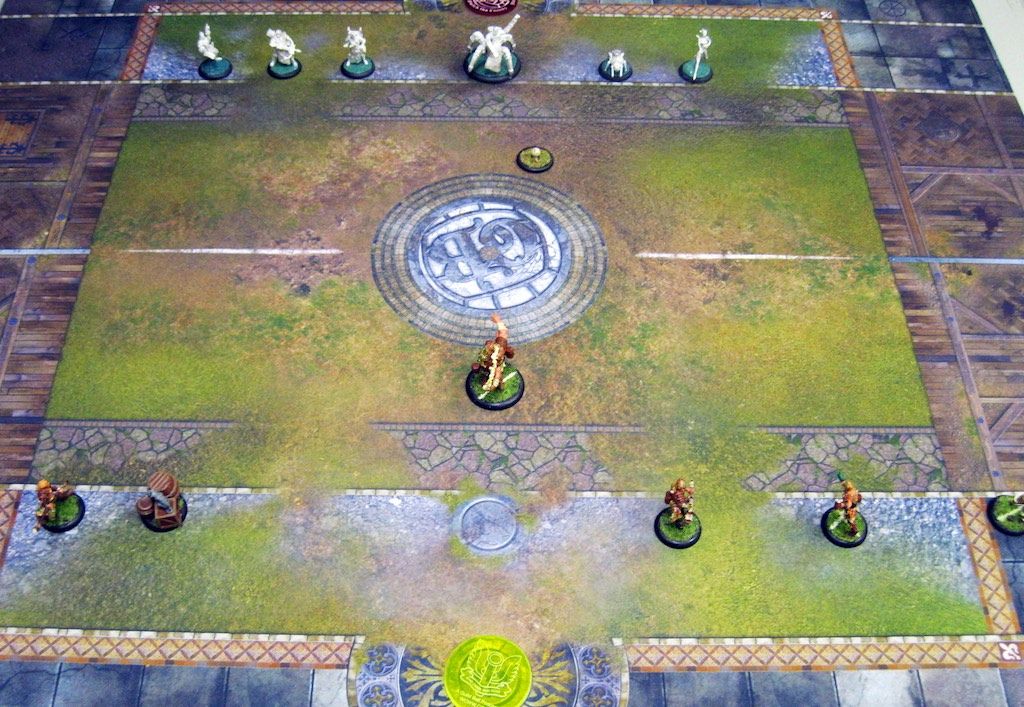 On the Brewers side I decided to also role out with a fairly standard Brewers setup. Tapper, Scum, Spigot, Stave, Friday, Hooper. I needed to figure out how to use Spigot more effectively, and was hoping to find the rumored damage dealer I've been hearing Hooper is. I kept Friday in the line as she's a fantastic striker, and of course no Brewers team is complete without Stave. I had the kickoff so chose to kick with Stave. I like using Stave for my kick-off as it allows him to move up the field before the game starts. This gives his impressive threat range for his barrels a solid grasp on the center of the board. I'm also not concerned with his poor kick stat as he has enough to place the ball over the mid-line. I'm starting to set the ball centered on the mid-field line, knowing my scatter (minimum 1 inch) will always carry the ball across. This becomes tricky if your trying to kick at an angle, which I do not regularly do. In this case the ball flew straight forward, halfway to Collosus. I was comfortable with a plan for knockdown to spring the ball from from whoever ended up holding it.
On the Brewers side I decided to also role out with a fairly standard Brewers setup. Tapper, Scum, Spigot, Stave, Friday, Hooper. I needed to figure out how to use Spigot more effectively, and was hoping to find the rumored damage dealer I've been hearing Hooper is. I kept Friday in the line as she's a fantastic striker, and of course no Brewers team is complete without Stave. I had the kickoff so chose to kick with Stave. I like using Stave for my kick-off as it allows him to move up the field before the game starts. This gives his impressive threat range for his barrels a solid grasp on the center of the board. I'm also not concerned with his poor kick stat as he has enough to place the ball over the mid-line. I'm starting to set the ball centered on the mid-field line, knowing my scatter (minimum 1 inch) will always carry the ball across. This becomes tricky if your trying to kick at an angle, which I do not regularly do. In this case the ball flew straight forward, halfway to Collosus. I was comfortable with a plan for knockdown to spring the ball from from whoever ended up holding it.I drew out my Guild Plots and chose Sideline Repairs, Don't Touch the Hair, and Knee Slider. Against the Engineers I was expecting a lot of ranged knockdown coming my way, along with a fair bit of damage over time. I suspected I'd be able to score with Friday and considering I only had a single striker, the Knee Slider would come in handy to return back toward midfield after a goal. Don't touch the Hair is always a solid choice, and I planned to move aggressively into Ben's line and engage as many Engineer as I could. This would give me an opportunity to slow down some of his attacks.
Turn 1
Turn 1 left me feeling a bit like I was playing my Union team. Ben moved forward with Collosus and his team, providing me the opportunity to use Stave to knock down and push Collosus close to my lines. This opened up multiple options for charging in to attack Collosus. I was not expecting to take him out on Turn 1, but aimed to put a fair bit of damage onto him. Following my initial knock-down and push I began moving my additional models into position to provide bonuses from Ganging up. Scum shifted over and Friday moved up the field and his Collosus with Dirty Knives, penalizing his defense and preparing him for the charges.I started the attacks with Spigot walked in and rolled a bunch of dice on his single attack. 5 for the attack, 2 for ganing up, and an additional 3 for Collosus being knocked down and -2 defense from the knives. I only realize after the fact I should have had more due to Spigot's Floored trait granting extra dice against targets whoa re knocked down. After rolling and removing failures and armor, I was left with two full playbook results and a single success on the second wrap. Not horrible on a single influence attack. I left Collosus with damage and moved on through the turn. Hooper came in next with a charge, rocking 14 dice on a charge. Although he did fairly well, I shorted myself several dice overall. The calculation should have gone:
- 6 dice base TAC
- 4 dice on the charge
- 1 dice for knocked down (def 2 to def 1)
- 2 dice for dirty knives (-2 def off def 2)
- 3 for ganging up
- Total of 16 dice
I knew that going into Turn 2 I had to hold off Ben's shooting and also get the ball from Mainspring, shoot, and preserve my own team. I also figured that Ben would be looking to blow up Mainspring considering this was his first game and I'd ended the turn with model's grouped up nicely enough for it to have good impact.
Turn 2
Turn 2 started with Ben activating Ratched and tossing out a grenade along with overclocking his totem. This set-up the bug for a nice explosion and solid effect against my grouped up team. I used Friday's Shadow like to bounce into the bug and her low momentous tackle to grab the ball away from him. Ben played Protect your balls but wasn't able to grab the ball back. This left Friday able to move across the field and take a shot on goal, scoring and then Knee Sliding over to cover Velocity. Ben kicked the ball back out onto the field, leaving it sit near Ballista and Salvo, resting on the ground so it wouldn't get knocked free by a thrown barrel.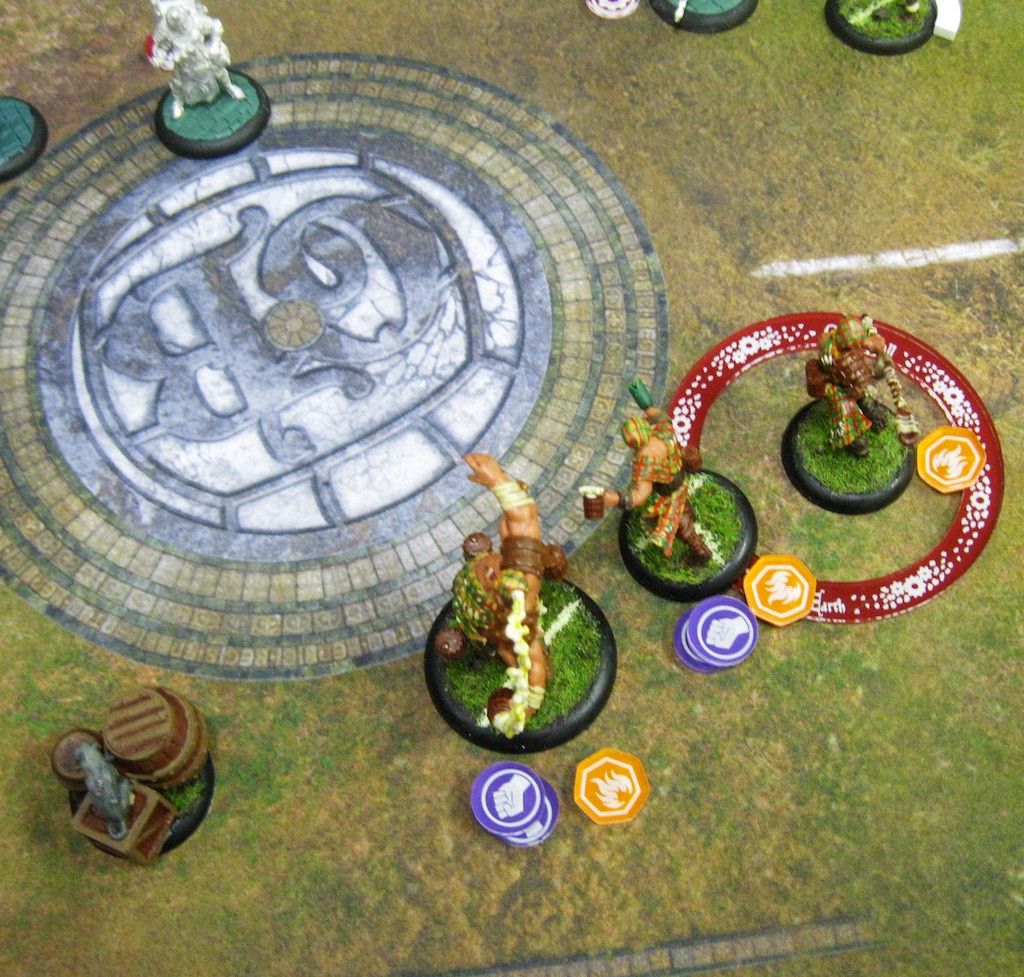 Following that action the score was sitting at 6 - 0 in my favor and Ben felt he needed to try and balance things out. He moved Mainspring forward, attacked for a point of damage on Spigot, then blew himself up. This did some damage and dumped fire out on three of my players, but also gave up an additional 2 points to me for an 8-0 score. This left me 1 goal out from winning the game. I activated Stave with the intention of putting out the fire and knocking Ben's models around a bit. I was successful in knocking Ballista away from his team, causing Ben some challenges in getting him back into position to support the team via momentum generation.
Following that action the score was sitting at 6 - 0 in my favor and Ben felt he needed to try and balance things out. He moved Mainspring forward, attacked for a point of damage on Spigot, then blew himself up. This did some damage and dumped fire out on three of my players, but also gave up an additional 2 points to me for an 8-0 score. This left me 1 goal out from winning the game. I activated Stave with the intention of putting out the fire and knocking Ben's models around a bit. I was successful in knocking Ballista away from his team, causing Ben some challenges in getting him back into position to support the team via momentum generation.
Ballista needed to get back into a better position so Ben stood him up and walked him back toward the scrum. He finished up his turn knocking down Stave and popping his legendary play in the hopes I'd start wracking up some damage. Unfortunately for Ben this was not my first time facing Engineers and I had already accomplished a lot for the turn. I didn't have a driving need to re-position and suffer the damage and was able to suffer out the remainder of the turn staying still in the minefield. Ben continued through his activation, activating Salvo and pushing my models around a bit for some minimal damage. He left the ball laying in the open field, hoping he had blocked it out enough with Ratched, Ballista, and Salvo to keep me from getting anyone to it. I chose to complete my turn by moving Spigot through the minefield to block out Velocity on Turn 3, hoping to get initiative but positioning in case I did not. If Ben got initiative I had Velocity covered by two players. If I got initiative I had Spigot positioned so I could make a run to retrieve the ball with Friday then jump back into Spigots Football Legend aura to make the shot on the goal. Ben took the last activation to move Velocity toward the ball and hope to provide some additionl protection against my team grabbing the ball and shooting.
Turn 3
Turn 3 started with Ben taking the initiative but surprising me by activating Ratchet and tossing some grenades out. I suspect this is due to his inexperience with Engineers, as he only slowed down a couple players I already had late in my activation order. I'm not sure if he missed the goal threat from Friday or simply underestimated her ability to get to the ball and score. I am aware that Ben had been suffering knockdowns from Stave through the game, and he may have been trying to mitigate Stave's threat range on the board, spotting that I'd given him 2 influence.I activated Friday and using her shadow like dodge plus sprint was able to slip through his lines and grab the ball. Friday thenThis left Friday in a tenuous position, engaged with Velocity but also in football legend range. Despite losing dice from engagement and having a blocked line to the goal (we played this incorrectly), I decided it was worth the chance to win the game and made a 1 die roll. I ended up making the goal and winning the game.

